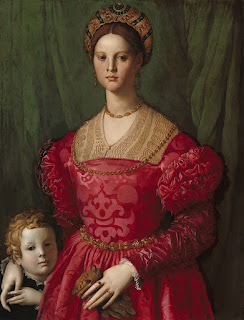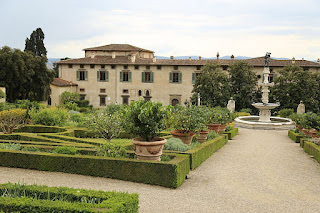NEW - Maria de’ Medici – the tragic daughter of Cosimo I
Mario Castelnuovo-Tedesco – composer
Versatile musician wrote for stringed instruments and for films
One of the most admired composers of the 20th century, Mario Castelnuovo-Tedesco, was born on this day in 1895 in Florence. He composed more than 100 pieces of music for the guitar, many of them written for the Spanish guitarist Andrés Segovia. Because of anti-semitism in Europe, Mario emigrated to the United States in 1939 where he went to work for Metro-Goldwyn-Mayer, composing music for about 200 films. Mario was descended from a family of bankers that had lived in Siena since the Jews were expelled from Spain in the 16th century. He was introduced to the piano by his mother and was composing music by the time he was nine years old. His mother recognised his musical talent and encouraged him to study the piano and composition under well-regarded musicians. Mario came to the attention of the composer and pianist Alfredo Casella, who included some of his work in his repertoire and promoted him throughout Europe as an up-and-coming young composer. In 1926, Mario’s first opera, La mandragola, was premiered. Based on a play by Niccolò Machiavelli, it was the first of his many works inspired by great literature. Read more…
______________________________________
Alcide De Gasperi - prime minister who rebuilt Italy
Christian Democrat founder was jailed by Mussolini
Born on this day in 1881, Alcide De Gasperi was the Italian prime minister who founded the Christian Democrat party and led the rebuilding of the country after World War II. An opponent of Benito Mussolini who survived being locked up by the Fascist dictator, he was the head of eight consecutive governments between 1945 and 1953, a record for longevity in post-War Italian politics. Although Silvio Berlusconi has spent more time in office - nine years and 53 days compared with De Gasperi's seven years and 238 days - the media tycoon's time in power was fragmented, whereas De Gasperi served continuously until his resignation in 1953. As prime minister, De Gasperi was largely responsible for Italy's post-War economic salvation and for helping to hold the line between East and West as the Soviet Union established its border on Italy's doorstep. During his premiership, Italy became a republic, signed a peace treaty with the Allies, joined the North Atlantic Treaty Organization (NATO) and became an ally of the United States, who in turn provided considerable help in reviving the shattered Italian economy. Read more…
____________________________________
Alessandro Stradella – violinist and composer
Talented musician lived for romance and adventure
Baroque composer Alessandro Stradella, who led a colourful life courting danger while producing more than 300 highly regarded musical works, was born on this day in 1639 at Nepi in the province of Viterbo, north of Rome in the Lazio region. After an affair with the mistress of a Venetian nobleman he was attacked in the street and left for dead by two hired assassins, but he lived on for another few years to compose more music. Five years later he was stabbed to death in Genoa, but the identity of his killers was never confirmed. Stradella was born into an aristocratic family and by the age of 20 was making a name for himself as a composer. He moved to Rome where he composed sacred music for Queen Christina of Sweden, who had abdicated her throne to go and live there. It is believed he tried to embezzle money from the Roman Catholic Church and his numerous reckless affairs with women also made him enemies among powerful people in the city. In 1637 he moved to Venice where he was hired by a nobleman, Alvise Contarini, as a music tutor to his mistress. Stradella began an affair with her and they attempted to elope together to Turin in 1677. Read more…
_______________________________________
Maria Redaelli - supercentenarian
Inter fan who was the oldest living person in Europe
Maria Angela Redaelli, a supercentenarian who for 10 months was the oldest living person in Europe and for 14 months the oldest living person in Italy, was born on this day in 1899 in Inzago in Lombardy. She died in 2013 on the eve of what would have been her 114th birthday, at which point she was the fourth oldest living person in the world, behind the Japanese supercentenarians Jiroemon Kimura and Misao Okawa, and the American Gertrude Weaver. Kimura died two months later at the age of 116 years and 54 days, which is the most advanced age reached by any male in the history of the human race, according to verifiable records. Okawa and Weaver survived for another two years, Okawa reaching 117 years and 27 days, which made her the fifth oldest woman in history at the time, although she has since been overtaken by the Italian Emma Morano, who is still living in Pallanza on Lake Maggiore and is, at 117 years and 124 days, the oldest person on the planet of verifiable age. At the time of her death, Maria was living in Novate Milanese, a suburb of Milan, being looked after by her 88-year-old daughter Carla and her grandson, Lamberto. Read more…
_de'_Medici.jpg)
.jpg)
.jpg)











.png)
.jpg)
